Aaron Siskind (1903-1991). Photographe américain ; enseignant et journaliste, il est connu surtout pour ses recherches innovantes dans le domaine de la photographie abstraite.né le 4 décembre 1903 à New York. Il commence à pratiquer la photographie en 1932, alors qu'il est professeur d'anglais dans une école publique de New York. Devenu membre de la Photo League, il participe à des enquêtes sur la vie dans les quartiers populaires durant la grande dépression. Contrairement aux autres séries documentaires de l'époque, ses reportages Dead End : The Bowery et Harlem Document, consacrés l'un et l'autre à un quartier de Manhattan dont la population est largement éprouvée par la crise, témoignent d'un intérêt égal pour les aspects esthétiques de l'image et pour les difficultés des individus qu'il rencontre. Dès la fin des années 1930, Siskind s'éloigne des sujets humains, et se tourne vers la photographie d'architecture (Old Houses of Bucks County), fixant l'image de vieilles maisons du comté de Bucks, mais aussi de phénomènes naturels et composant des natures mortes.Les recherches menées par Siskind dans le domaine de l'abstraction ont eu pour point de départ le désir d'exprimer sa propre intériorité à travers la photographie, au lieu de ne voir en elle qu'un moyen d'enregistrer la réalité extérieure. Au début des années 1940, il explore les motifs et les textures de matières aussi communs que de la corde torsadée, des empreintes de pas dans le sable ou des algues. À l'instar des membres du Group f.64, il parvient à de surprenantes et poignantes images, en cadrant ses sujets au plus près. Quelques années plus tard, son intérêt croissant pour l'abstraction le porte vers les surfaces bidimensionnelles : chaussées, panneaux d'affichage et murs, de préférence altérés par les intempéries et le délabrement. Cette démarche aboutira à la saisissante série de photographies réalisée à Rome en 1967 dans les ruines de l'arc de Constantin et de la via Appia. Les premiers travaux abstraits de Siskind reçurent […]
Vente Lempertz - Photography Auctions in Cologne Vente Ventes : Photographie Moderne et Contemporaine - 25 mai 2016 Vente Sale : Photography New york New york Vente Ventes : 36th annual holiday sale Vente La photo à l'honneur dans une vente aux enchères à l'Hôtel Drouot Vente «Photographies modernes et contemporaines»: vente aux enchères Vente Vente de préstige à l'occasion de paris photo : Photographie ancienne, moderne et contemporaine Vente Photographs auction Exposition «Window Dressing» Exposition « Songs and the Sky » : An exhibition of art and music Exposition Exposition : « Dust, une histoire de poussière - d'après Man Ray et Marcel Duchamp » Exposition Exposition Aaron Siskind Exposition Thirty Years Thirty-One Photographers Exposition Giorgio Armani, partenaire officiel de Paris photo, présente l'exposition Acqua#2 au Grand Palais à Paris Exposition « Second Nature : Abstract Photography Then and Now » s'expose au DeCordova Museum Exposition At the Water's edge, at Robert Mann Gallery Exposition LA COLLECTION S'EXPOSE - Polaroïd en péril ! Exposition A social documentary photographer and an Abstract Expressionist - Aaron Sisking Exposition Fine 19th, 20th and Contemporary Photography Exposition Right Through the Very Heart of It Exposition Cosa Nostra : (Our Thing) Exposition Aaron Siskind - The egan Gallery years 1947 - 1954 Modifier l'image
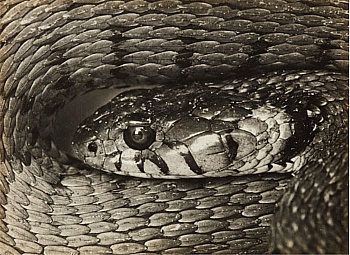 Auction 1068: Photography
Friday, 3 June 2016 2pm
Highlight of this sale is a group of vintage prints by Albert Renger-Patzsch, which includes his famous image "Natterkopf" from 1925. The exceptional work was published in 1928 in his photo book "Die Welt ist schön" (lot 20, €15,000–20,000). The piece was made together with two other animal portraits at Dresden Zoo (lots 18/19, each est. €5,000-6,000) and due to its fascinatingly abstract graphic qualities it has become one of Renger-Patzsch’s most famous works. "Natterkopf" will be coming under the hammer for the first time, together with a selection of other plant, object and landscape photographs by the artist.
A further top lot is an early 1920s vintage print of Karl Blossfeldt’s "Salvia Argent...
Auction 1068: Photography
Friday, 3 June 2016 2pm
Highlight of this sale is a group of vintage prints by Albert Renger-Patzsch, which includes his famous image "Natterkopf" from 1925. The exceptional work was published in 1928 in his photo book "Die Welt ist schön" (lot 20, €15,000–20,000). The piece was made together with two other animal portraits at Dresden Zoo (lots 18/19, each est. €5,000-6,000) and due to its fascinatingly abstract graphic qualities it has become one of Renger-Patzsch’s most famous works. "Natterkopf" will be coming under the hammer for the first time, together with a selection of other plant, object and landscape photographs by the artist.
A further top lot is an early 1920s vintage print of Karl Blossfeldt’s "Salvia Argent... Le 25 mai prochain, venez découvrir la vente organisée par Viviane Esders Photographie : « Photographie Moderne et Contemporaine »
© Gérard Rancinan "«Batman family girls», 2011 (estimation 35 000-45 000 €)
Hôtel Drouot - Paris - Salle 6 - 14h
Maître Yann Le Mouel, Viviane Esders Expert
© Berenice Abbott, New York by night, 1932 (estimation 15 000-25 000 €)
Expositions publiques
Mardi 24 mai 11h-18h
Mercredi 25 mai 11h-12h
Consultez le catalogue et enchérissez sur le site internet....
Le 25 mai prochain, venez découvrir la vente organisée par Viviane Esders Photographie : « Photographie Moderne et Contemporaine »
© Gérard Rancinan "«Batman family girls», 2011 (estimation 35 000-45 000 €)
Hôtel Drouot - Paris - Salle 6 - 14h
Maître Yann Le Mouel, Viviane Esders Expert
© Berenice Abbott, New York by night, 1932 (estimation 15 000-25 000 €)
Expositions publiques
Mardi 24 mai 11h-18h
Mercredi 25 mai 11h-12h
Consultez le catalogue et enchérissez sur le site internet....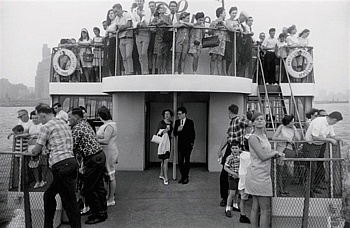 Artnet Auctions is pleased to present Photography: New York, New York, an auction dedicated to the city that never sleeps, with works ranging in value from $1,500 to 25,000.
©Neal Slavin
The works included range from turn of the century to present day, and capture the beauty and spirit of the city and those who inhabit it. This auction features works by renowned photographers such as Diane Arbus, Paul Strand, Hiroshi Sugimoto, Nan Goldin, Robert Longo, Stephen Wilkes, Aaron Siskind, Ruth Orkin, Leonard Freed, Edward Pfizenmaier, William Klein, Berenice Abbott, Ernst Haas, Tom Baril, Garry Winogrand, Josef Hoflehner, and George Tice.
© Berenice Abbott (American, 1898–1991)
...
Artnet Auctions is pleased to present Photography: New York, New York, an auction dedicated to the city that never sleeps, with works ranging in value from $1,500 to 25,000.
©Neal Slavin
The works included range from turn of the century to present day, and capture the beauty and spirit of the city and those who inhabit it. This auction features works by renowned photographers such as Diane Arbus, Paul Strand, Hiroshi Sugimoto, Nan Goldin, Robert Longo, Stephen Wilkes, Aaron Siskind, Ruth Orkin, Leonard Freed, Edward Pfizenmaier, William Klein, Berenice Abbott, Ernst Haas, Tom Baril, Garry Winogrand, Josef Hoflehner, and George Tice.
© Berenice Abbott (American, 1898–1991)
...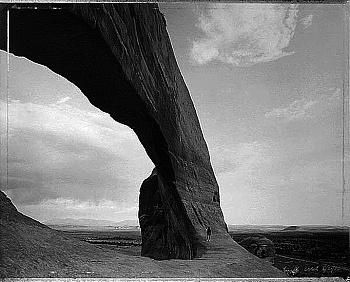 The sale began saturday 20 but you have the opportunity to preview the SALE online and do a preemptive purchase!
For 35 years this show has been a magnet for all photography lovers: from novices buying their first photograph, to some of America's top museum curators looking for something really unusual.
There are over 400 photographs for sale at greatly reduced prices by such masters as Ansel Adams, Eugene Atget, Brassaï, Harry Callahan, Edward Curtis, Walker Evans, Lewis Hine, E.O. Hoppe (a special-purchase collection of industrial-modernist work), Carl Mydans, André Kertész, George Rodger, Aaron Siskind, Josef Sudek, Edward Weston, Minor White, Yvon of Paris, and others, including the versatile, redoubtable, anonymous and inexplicable vernacular photographs.
© Alan Henriksen
...
The sale began saturday 20 but you have the opportunity to preview the SALE online and do a preemptive purchase!
For 35 years this show has been a magnet for all photography lovers: from novices buying their first photograph, to some of America's top museum curators looking for something really unusual.
There are over 400 photographs for sale at greatly reduced prices by such masters as Ansel Adams, Eugene Atget, Brassaï, Harry Callahan, Edward Curtis, Walker Evans, Lewis Hine, E.O. Hoppe (a special-purchase collection of industrial-modernist work), Carl Mydans, André Kertész, George Rodger, Aaron Siskind, Josef Sudek, Edward Weston, Minor White, Yvon of Paris, and others, including the versatile, redoubtable, anonymous and inexplicable vernacular photographs.
© Alan Henriksen
... L'Hôtel Drouot mettra en vente jeudi 5 juin 2014 à 14h un important lot de photographies consacré aux grands maîtres de la photographie du 20e siècle ainsi qu’à certains photographes contemporains.
La vente commencera avec de rares tirages sur papier salé sur l’Italie par Gustave Le Gray, Eugène Constant, Tommaso Cuccioni, Adriano de Bonis, accompagné d’Auguste Salzmann sur Jérusalem.
On retrouvera les années 1930 à 1950 avec des tirages d’époque sur Paris, des nus, des études surréalistes et des portraits par Pierre Boucher, André Steiner, Jean Moral, George Hoyningen Huene, Emeric Feher, Aram Alban, Izis, Marcel Bovis, Maurice Tabard, René-Jacques, Lucien Hervé...
L'Hôtel Drouot mettra en vente jeudi 5 juin 2014 à 14h un important lot de photographies consacré aux grands maîtres de la photographie du 20e siècle ainsi qu’à certains photographes contemporains.
La vente commencera avec de rares tirages sur papier salé sur l’Italie par Gustave Le Gray, Eugène Constant, Tommaso Cuccioni, Adriano de Bonis, accompagné d’Auguste Salzmann sur Jérusalem.
On retrouvera les années 1930 à 1950 avec des tirages d’époque sur Paris, des nus, des études surréalistes et des portraits par Pierre Boucher, André Steiner, Jean Moral, George Hoyningen Huene, Emeric Feher, Aram Alban, Izis, Marcel Bovis, Maurice Tabard, René-Jacques, Lucien Hervé... Eugène Atget ouvre la vente de photographies avec quatre très beaux tirages albuminés dont un rare Nu de la série « Paris Pittoresque III » de 1921 (3 000-4 000 €). Un autre tirage de ce « Nu » figurait dans la Collection de Man Ray. Il est actuellement conservé à la George Eastman House, Rochester, N.Y.
La sculpture très renommée de « Léda » de Constantin Brancusi, 1921, photographiée par l’auteur, est représentée par un tirage d’époque exceptionnel (15 000-20 000 €).
MAN RAY : Très rare ouvrage « Résurrection des mannequins » avec les mannequins réalisés par Salvador Dali, Oscar Dominguez, Marcel Duchamp, Max Ernst, Andr...
Eugène Atget ouvre la vente de photographies avec quatre très beaux tirages albuminés dont un rare Nu de la série « Paris Pittoresque III » de 1921 (3 000-4 000 €). Un autre tirage de ce « Nu » figurait dans la Collection de Man Ray. Il est actuellement conservé à la George Eastman House, Rochester, N.Y.
La sculpture très renommée de « Léda » de Constantin Brancusi, 1921, photographiée par l’auteur, est représentée par un tirage d’époque exceptionnel (15 000-20 000 €).
MAN RAY : Très rare ouvrage « Résurrection des mannequins » avec les mannequins réalisés par Salvador Dali, Oscar Dominguez, Marcel Duchamp, Max Ernst, Andr... SAMEDI 21 NOVEMBRE 2009 - MAITRE LE MOUEL - HOTEL DROUOT SALLE 16, 14H
Expositions publiques : vendredi 20 novembre 11h-18h et samedi 21 novembre 11h-12h
Catalogue : 15 euros
Le catalogue est consultable en ligne :
http://www.viviane-esders.com/prochaine_vente.htm
...
SAMEDI 21 NOVEMBRE 2009 - MAITRE LE MOUEL - HOTEL DROUOT SALLE 16, 14H
Expositions publiques : vendredi 20 novembre 11h-18h et samedi 21 novembre 11h-12h
Catalogue : 15 euros
Le catalogue est consultable en ligne :
http://www.viviane-esders.com/prochaine_vente.htm
...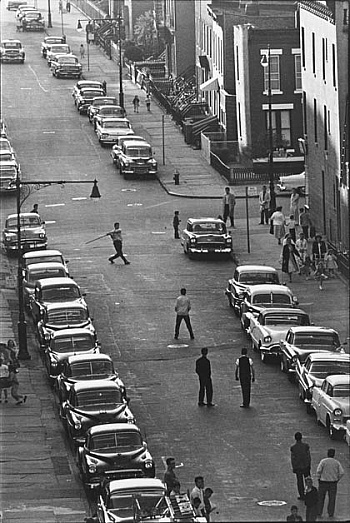 A mid-season Photographs sale composed of high-quality 20th and 21st Century works on January 31, 2008.
Viewing 25 - 30 January
25-26 January, 10am - 5pm
27 January, 12pm - 5pm
28-30 January, 10am - 5pm
Reception 24 January 6-8pm
Please view our Photographs catalogue online and read more about the sale on our website www.phillipsdepury.com.
...
A mid-season Photographs sale composed of high-quality 20th and 21st Century works on January 31, 2008.
Viewing 25 - 30 January
25-26 January, 10am - 5pm
27 January, 12pm - 5pm
28-30 January, 10am - 5pm
Reception 24 January 6-8pm
Please view our Photographs catalogue online and read more about the sale on our website www.phillipsdepury.com.
...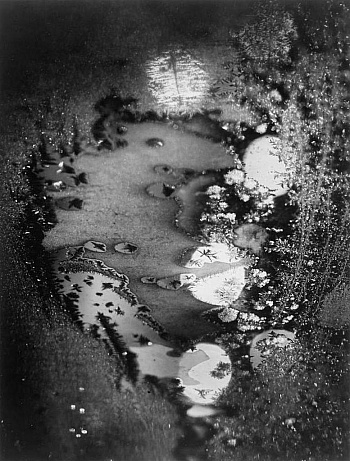 Press Release -
L. Parker Stephenson Photographs is pleased to expand its exploration of the window as a motif in Window Dressing . . . Continued, a group exhibition of vintage and later prints by master 20th century photographers. New work joins a few favorites from the last exhibition.
© Louis Faurer, Accident, New York, c. 1948-1952
Harry Callahan, Chicago, 1948
© John Cohen, Tanager Gallery, Tenth Street, Lois Dodd in Window, 1959
...
Press Release -
L. Parker Stephenson Photographs is pleased to expand its exploration of the window as a motif in Window Dressing . . . Continued, a group exhibition of vintage and later prints by master 20th century photographers. New work joins a few favorites from the last exhibition.
© Louis Faurer, Accident, New York, c. 1948-1952
Harry Callahan, Chicago, 1948
© John Cohen, Tanager Gallery, Tenth Street, Lois Dodd in Window, 1959
...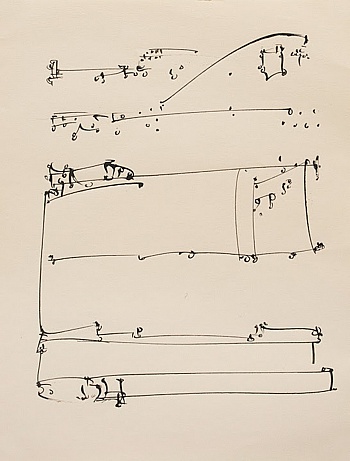 Bruce Silverstein Gallery is pleased to present « Songs and the Sky », an exhibition of art and music.
© Barbara Morgan
Artworks by Lisette Model, Barbara Morgan, Aaron Siskind, Frederick Sommer, and Alfred Stieglitz will be paired with musical compositions by Ernest Bloch, John Cage, Arnold Schoenberg, Henry Cowell, and Christopher Washburne. Historically and conceptually relevant musical compositions were chosen to provoke, compliment, enhance, and challenge a reading of the visual artworks. Music served as literal or ideological inspiration for these artists, who sought to create work with the equivalent potential to communicate or translate abstract concepts directly.
© Lisette Model
The exhibition title derives from Alfred Stieglitz’s historic series, Songs of ...
Bruce Silverstein Gallery is pleased to present « Songs and the Sky », an exhibition of art and music.
© Barbara Morgan
Artworks by Lisette Model, Barbara Morgan, Aaron Siskind, Frederick Sommer, and Alfred Stieglitz will be paired with musical compositions by Ernest Bloch, John Cage, Arnold Schoenberg, Henry Cowell, and Christopher Washburne. Historically and conceptually relevant musical compositions were chosen to provoke, compliment, enhance, and challenge a reading of the visual artworks. Music served as literal or ideological inspiration for these artists, who sought to create work with the equivalent potential to communicate or translate abstract concepts directly.
© Lisette Model
The exhibition title derives from Alfred Stieglitz’s historic series, Songs of ... L’exposition Dust – Histoires de poussière d’après Man Ray et Marcel Duchamp retrace la vie et les tribulations d’une étrange photographie réalisée en 1920 par Man Ray ou était-ce Marcel Duchamp ? ou peut-être Man Ray et Marcel Duchamp ? La photographie est sans prétention mais énigmatique. C’est un document. C’est une œuvre d’art. C’est un document sur une œuvre d’art. elle est réaliste et abstraite. C’est une nature morte et un paysage. Peut-être même une performance. Je vous dirais volontiers son titre si je le connaissais.
Au début, personne ne s’est beaucoup intéressé à cette image, mais avec le temps elle est devenue un talisman...
L’exposition Dust – Histoires de poussière d’après Man Ray et Marcel Duchamp retrace la vie et les tribulations d’une étrange photographie réalisée en 1920 par Man Ray ou était-ce Marcel Duchamp ? ou peut-être Man Ray et Marcel Duchamp ? La photographie est sans prétention mais énigmatique. C’est un document. C’est une œuvre d’art. C’est un document sur une œuvre d’art. elle est réaliste et abstraite. C’est une nature morte et un paysage. Peut-être même une performance. Je vous dirais volontiers son titre si je le connaissais.
Au début, personne ne s’est beaucoup intéressé à cette image, mais avec le temps elle est devenue un talisman... Figure majeure de la photographie américaine, mais trop souvent contournée, Aaron Siskind (1903-1991) voit l’importance de son oeuvre se déployer enfin dans une exposition monographique exhaustive, la première depuis plus de 30 ans, constituée de près de 250 tirages originaux, conçue et organisée par le Pavillon Populaire, en collaboration avec les archives Siskind (Center for Creative Photography, Tucson) et la Aaron Siskind Foundation de New York.
Commencée à New York dans les années 1930 sous le signe d’un réalisme documentaire rigoureux, jamais délaissée, au sein de la prestigieuse Photo League, elle revêt, à partir de 1943, un formalisme exigeant, aux limites de l’abstraction, sous l&rs...
Figure majeure de la photographie américaine, mais trop souvent contournée, Aaron Siskind (1903-1991) voit l’importance de son oeuvre se déployer enfin dans une exposition monographique exhaustive, la première depuis plus de 30 ans, constituée de près de 250 tirages originaux, conçue et organisée par le Pavillon Populaire, en collaboration avec les archives Siskind (Center for Creative Photography, Tucson) et la Aaron Siskind Foundation de New York.
Commencée à New York dans les années 1930 sous le signe d’un réalisme documentaire rigoureux, jamais délaissée, au sein de la prestigieuse Photo League, elle revêt, à partir de 1943, un formalisme exigeant, aux limites de l’abstraction, sous l&rs...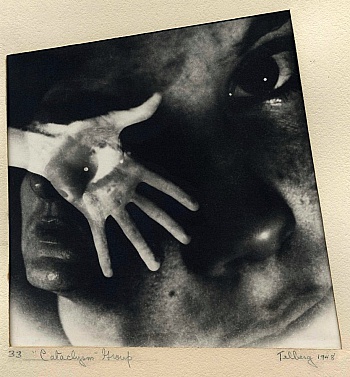 Over these past three decades, the Laurence Miller Gallery has hosted approximately 250 exhibitions, and the list of these shows reflects the evolution of photography from the classic black-and-white medium that dominated much of the 20th Century, to today's large-format color contemporary works, as well as video. The gallery takes great pride in having given many emerging photographers their first one-person exhibitions in New York City, as well as having presented many of photography's greatest masters.
Thirty Years Thirty-One Photographers offers to both the connoisseur and the novice collector many of the most famous images shown along with rare prints from the Gallery's private collection. Here is a sampling:
Peter Bialobrzeski
Paradise Now #32, 2008
40 x 50 inch Type-C print
Editio...
Over these past three decades, the Laurence Miller Gallery has hosted approximately 250 exhibitions, and the list of these shows reflects the evolution of photography from the classic black-and-white medium that dominated much of the 20th Century, to today's large-format color contemporary works, as well as video. The gallery takes great pride in having given many emerging photographers their first one-person exhibitions in New York City, as well as having presented many of photography's greatest masters.
Thirty Years Thirty-One Photographers offers to both the connoisseur and the novice collector many of the most famous images shown along with rare prints from the Gallery's private collection. Here is a sampling:
Peter Bialobrzeski
Paradise Now #32, 2008
40 x 50 inch Type-C print
Editio...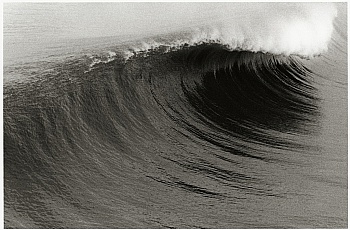 Pour la deuxième année consécutive, Giorgio Armani soutient Paris Photo, le rendez-vous international incontournable de la photographie, qui se tiendra du 15 au 18 novembre prochain au Grand Palais à Paris.
Partenaire officiel de l’évènement, Giorgio Armani soutient l’exposition « Acquisitions récentes », et présentera pour la deuxième fois un corpus de photographies en résonnance avec l’eau.
L’eau, présente depuis toujours dans le travail de Giorgio Armani, fait également l’objet depuis 2009 d’un engagement citoyen du créateur, à travers l’opération « Acqua for Life™ », qui lors de sa dernière édition a permis de collec...
Pour la deuxième année consécutive, Giorgio Armani soutient Paris Photo, le rendez-vous international incontournable de la photographie, qui se tiendra du 15 au 18 novembre prochain au Grand Palais à Paris.
Partenaire officiel de l’évènement, Giorgio Armani soutient l’exposition « Acquisitions récentes », et présentera pour la deuxième fois un corpus de photographies en résonnance avec l’eau.
L’eau, présente depuis toujours dans le travail de Giorgio Armani, fait également l’objet depuis 2009 d’un engagement citoyen du créateur, à travers l’opération « Acqua for Life™ », qui lors de sa dernière édition a permis de collec...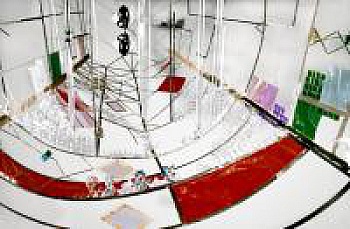 « It is another nature which speaks to the camera rather than to the eye » Walter Benjamin, Little History of Photography (1931)
Abstract photography challenges our popular view of photography as an objective image of reality by reasserting its constructed nature. In Walter Benjamin’s essay on the history of photography, the philosopher and critical theorist articulates photography’s « second nature » as its inherent ability to detach and abstract the visible from the real. Non-representational photography lives in this contested middle ground between material reality and photographic illusion—fact and fiction—first and second natures. Today, anyone who has a cell phone can take and send digital pictures instantaneously. In response to this snapshot culture, many art...
« It is another nature which speaks to the camera rather than to the eye » Walter Benjamin, Little History of Photography (1931)
Abstract photography challenges our popular view of photography as an objective image of reality by reasserting its constructed nature. In Walter Benjamin’s essay on the history of photography, the philosopher and critical theorist articulates photography’s « second nature » as its inherent ability to detach and abstract the visible from the real. Non-representational photography lives in this contested middle ground between material reality and photographic illusion—fact and fiction—first and second natures. Today, anyone who has a cell phone can take and send digital pictures instantaneously. In response to this snapshot culture, many art...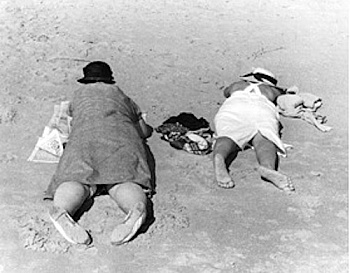 From baptisms to beach getaways, the water's edge is a site for transformations. With this threshold as its inspiration, Robert Mann Gallery's summer exhibition At the Water's Edge includes both historical and contemporary images engaged with those recurrent summer traditions of flocking to the water, either manmade or natural, for a much needed respite. It is no wonder then that the shoreline and the swimming pool have provided numerous photographers with inspiration.
Vignette: © Fred Stein: Lying in Sand, La Baule, Brittany, France, 1937
...
From baptisms to beach getaways, the water's edge is a site for transformations. With this threshold as its inspiration, Robert Mann Gallery's summer exhibition At the Water's Edge includes both historical and contemporary images engaged with those recurrent summer traditions of flocking to the water, either manmade or natural, for a much needed respite. It is no wonder then that the shoreline and the swimming pool have provided numerous photographers with inspiration.
Vignette: © Fred Stein: Lying in Sand, La Baule, Brittany, France, 1937
... Ansel Adams | Manuel Alvarez-Bravo | Nancy Burson | Walker Evans | Joan Fontcuberta | Gisèle Freund | Luigi Ghirri | Ralph Gibson | Yousuf Karsh | David Levinthal | Sally Mann | Robert Mapplethorpe | Arno Minkkinen | Sarah Moon | Arnold Newman | Helmut Newton | Bill Owens | Bernard Plossu | Bettina Rheims | Lucas Samaras | Stephen Shore | Aaron Siskind | Oliviero Toscani | Andy Warhol | Willliam Wegman.
Durant un demi-siècle, Polaroïd a été synonyme de photographie instantanée. Malgré l'attachement que lui portaient les amateurs comme les professionnels, les films et les appareils Polaroïd ont été victime de la révolution numérique. Avec toutes les consé-quences que cela impliquait pour quantité d'artistes qui a...
Ansel Adams | Manuel Alvarez-Bravo | Nancy Burson | Walker Evans | Joan Fontcuberta | Gisèle Freund | Luigi Ghirri | Ralph Gibson | Yousuf Karsh | David Levinthal | Sally Mann | Robert Mapplethorpe | Arno Minkkinen | Sarah Moon | Arnold Newman | Helmut Newton | Bill Owens | Bernard Plossu | Bettina Rheims | Lucas Samaras | Stephen Shore | Aaron Siskind | Oliviero Toscani | Andy Warhol | Willliam Wegman.
Durant un demi-siècle, Polaroïd a été synonyme de photographie instantanée. Malgré l'attachement que lui portaient les amateurs comme les professionnels, les films et les appareils Polaroïd ont été victime de la révolution numérique. Avec toutes les consé-quences que cela impliquait pour quantité d'artistes qui a...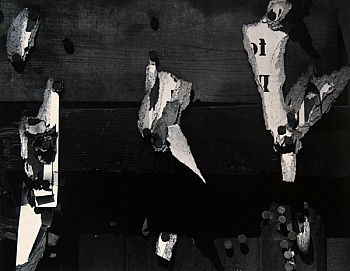 Aaron Siskind led two lives, one as a seriously committed social documentary photographer and one as an Abstract Expressionist. He did well in both lives, but it is in the latter involvement alongside artists such as Franz Kline, Willem de Kooning, Jackson Pollock, and other American Abstract Expressionists, that his greatest impact is felt. He did with light and a camera what the others did with canvas, brushes and paint, and although the processes were very different the results were remarkably the same.
This exhibition focuses on how Siskind made the journey from Socialist Realism, as a member of the Photo-League and organizer of the seminal Harlem Document to the very core of the first, and perhaps most significant post WWII American art movement - Abstract Expressionism. The transition, when vie...
Aaron Siskind led two lives, one as a seriously committed social documentary photographer and one as an Abstract Expressionist. He did well in both lives, but it is in the latter involvement alongside artists such as Franz Kline, Willem de Kooning, Jackson Pollock, and other American Abstract Expressionists, that his greatest impact is felt. He did with light and a camera what the others did with canvas, brushes and paint, and although the processes were very different the results were remarkably the same.
This exhibition focuses on how Siskind made the journey from Socialist Realism, as a member of the Photo-League and organizer of the seminal Harlem Document to the very core of the first, and perhaps most significant post WWII American art movement - Abstract Expressionism. The transition, when vie...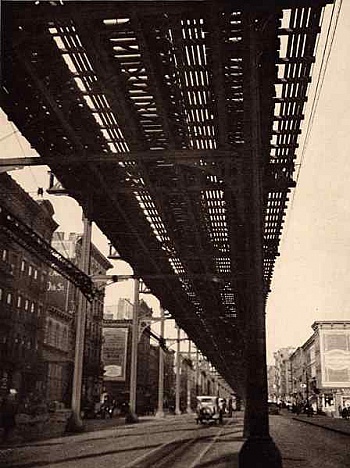 For 30 years this show has been a magnet for all photography fans, from novices buying their first photograph to some of America's top museum curators looking for something really unusual. There are over 400 photographs for sale by such masters as Ansel Adams, Eugene Atget, Edward Curtis, Frantisek Dritikol, Robert Frank, Lewis Hine, E.O. Hoppe, Edwin Hale Lincoln, Eliot Porter, Eadweard Muybridge, George Rodger, Aaron Siskind, W. Eugene Smith, Josef Sudek and others, to the redoubtable, versatile anonymous vernacular photograph.
We will feature, as well, work by contemporary photographers, Carolyn Marks Blackwood, Bob Kolbrener, Alyson Denny and Harry Wilks. Everything from the ridiculous to the sublime vies for the collector's attention, with special groups of images purchased exclusively for this sale. ...
For 30 years this show has been a magnet for all photography fans, from novices buying their first photograph to some of America's top museum curators looking for something really unusual. There are over 400 photographs for sale by such masters as Ansel Adams, Eugene Atget, Edward Curtis, Frantisek Dritikol, Robert Frank, Lewis Hine, E.O. Hoppe, Edwin Hale Lincoln, Eliot Porter, Eadweard Muybridge, George Rodger, Aaron Siskind, W. Eugene Smith, Josef Sudek and others, to the redoubtable, versatile anonymous vernacular photograph.
We will feature, as well, work by contemporary photographers, Carolyn Marks Blackwood, Bob Kolbrener, Alyson Denny and Harry Wilks. Everything from the ridiculous to the sublime vies for the collector's attention, with special groups of images purchased exclusively for this sale. ...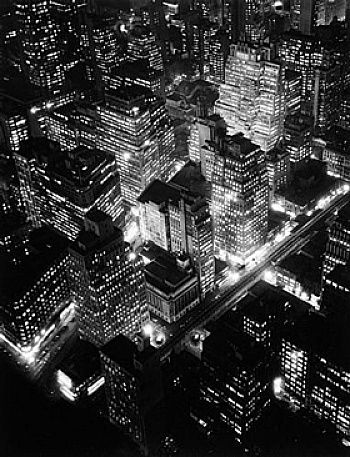 Right Through the Very Heart of It contrasts the icons and idiosyncrasies of New York, from the "vagabond shoes" to the "top of the heap," captured by some of the greatest photographers to roam these concrete streets.
Many of the medium's greatest innovators have made their name photographing the denizens and architecture that define our dear city. But such a diverse environment necessitates representing the grit as much as the glamour. In particular the exhibition will highlight sweeping vistas, architectural studies, street photography and street portraiture....
Right Through the Very Heart of It contrasts the icons and idiosyncrasies of New York, from the "vagabond shoes" to the "top of the heap," captured by some of the greatest photographers to roam these concrete streets.
Many of the medium's greatest innovators have made their name photographing the denizens and architecture that define our dear city. But such a diverse environment necessitates representing the grit as much as the glamour. In particular the exhibition will highlight sweeping vistas, architectural studies, street photography and street portraiture.... Reception:
Thursday April 23rd, 6 - 8 PM
A selection of work by the gallery's artists, plus some invited guests.
This show explores relationships between images which would be described as more visual than thematic. It is freewheeling and experimental.
Come see it quickly, as it is only up for 3 weeks....
Reception:
Thursday April 23rd, 6 - 8 PM
A selection of work by the gallery's artists, plus some invited guests.
This show explores relationships between images which would be described as more visual than thematic. It is freewheeling and experimental.
Come see it quickly, as it is only up for 3 weeks.... Robert Mann Gallery presents a selection of photographs by Aaron Siskind that draw upon the four seminal exhibitions the artist had at the Egan Gallery between April 1947 and June 1954. Included are a selection of prints believed to have been presented in the original exhibitions.
At the recommendation of his friend Barnett Newman, photographer Aaron Siskind paid a visit to art dealer Charles Egan, one of the few gallerists in New York devoted to contemporary art at the time. The result was four exhibitions at the Egan Gallery. Siskind's photography had begun moving away from social documentary, flattening the picture plane as everyday objects moved into abstraction. Placing Siskind in an exhibition program that included Robert Rauschenberg and provided the first American venue for Willem de Kooning, Egan recognized t...
Robert Mann Gallery presents a selection of photographs by Aaron Siskind that draw upon the four seminal exhibitions the artist had at the Egan Gallery between April 1947 and June 1954. Included are a selection of prints believed to have been presented in the original exhibitions.
At the recommendation of his friend Barnett Newman, photographer Aaron Siskind paid a visit to art dealer Charles Egan, one of the few gallerists in New York devoted to contemporary art at the time. The result was four exhibitions at the Egan Gallery. Siskind's photography had begun moving away from social documentary, flattening the picture plane as everyday objects moved into abstraction. Placing Siskind in an exhibition program that included Robert Rauschenberg and provided the first American venue for Willem de Kooning, Egan recognized t...